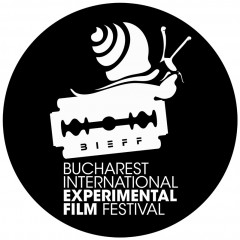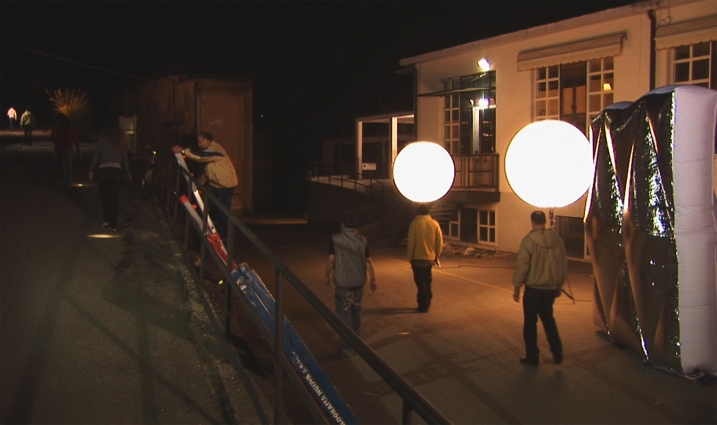Conceived as a collection of optical illusions, at a single location, twelve figures walk four identical routes in repetitive patterns, each trying to follow the movements of the person in front of them. As they move they concentrate on their steps and their rhythm and the repetition immunizes them from having to make sense of their movements. They move as if consumed by a single thought. The repetition turns them into somnambulists, as it were, in a world that seems to be outside the bounds of time. FLATFORM is a group of artists founded in 2007 and based in Milan and Berlin. Their exhibitions and screenings were present in film festivals like Venice IFF, Rotterdam IFF, Tampere IFF, Nouveau Cinema IFF (Montreal, Canada), Indielisboa IFF (Lisbon, Portugal), etc.
Ioana Mischie: First of all, we would love to know how did you start to working together and what was the initial concept of Flatform as a collective artist? What were your initial beliefs, the initial challenges. And moreover, as you come from different backgrounds and countries (Italy and Germany) how did you succeed in combining the two perspectives?
Flatform: In 2006 two of us met during an exhibition they had been invited into, and, appreciating each other’s work, they decided to start a collaboration. Immediately after the invitation has been extended to two other artists. The initial group was then formed by three Italian artists and a Swede. Italy and Germany, or more precisely, Milan and Berlin are places and horizons within which grows daily more the work of art than real conjunctions of different perspectives. But, as is natural, the prospects differ automatically when you change the observatory. For us, this happens all the time.

Ioana Mischie: We perceived „56 700 seconds of invisible night and light” as collection of optical illusions, where you explore repetitive patterns of the human being. These patterned-movements might be interpreted either as a struggle for escapism or as an apology for a continuum. It is a challenging contradiction. What inspired you in choosing this dimension of the human being and in surprising it into a short film?
Flatform: In this work the unity of place and action is guaranteed precariously through temporal discontinuity. The movements of the characters create trajectories and their repetition allows us to reflect on story telling and remembering. Story telling is to give one’s time: to enter inside the circle of the time movement. Remembering is to discover and understand, moving back to the rhythm of the return. The germ of the story is repetition.
Ioana Mischie: The editing you chose is highly innovative, by mixing the two different times into one, creating the feeling that everything is an intermittent omniscient mise-en-scene. Did you work with a script for the very beginning or it was rather a decision made during the post-production of the film?
Flatform: The installation combines, seamlessly within the action, the four takes shot at dawn, noon, during the sunset and at night. The editing has been developed starting from a script that in post-production has been disrupted more than once. Also with regard to editing, there is also a version of the video for multi-channel installations, in which the same frame is decomposed into several parts: each of these draws to a take shot in one of the 4 above mentioned moments of the day . In this way, the characters pass from a temporality to another one in the same image, and not in the same sequence.
Ioana Mischie:You set a new convention of mixing lights, times, spaces in a non-chronological manner, although this “different convention” on screen seems the “right, natural one”. What is your inner perception of time and space?
Flatform: For us, the time varies continuously between being infinite but limited and being finite but unlimited. In this video is the chronological time to be questioned. The space, however, is determined by the co-existence of trajectories defined by remembering and repetition. We are very interested to reconstruct the structure of the space starting from the perception of that space. Somehow ours is a geometric proceed that always starts from the vision. However, both time and space are always the result of the conventions with which one tries to block one of the infinite possible “real imaginaries”, by turning it in the only “imaginary Real”.
Ioana Mischie: What inspires you the most as artists and what themes and ideas you find worth-exploring and appealing for the cinematic language?
Flatform: The main sources of inspiration are both, the continuous challenge of the impossible versus the possible and the continuous confirmation that the thin and fragile boundaries between them are determined by the movement of the viewpoint. In this, the cinematic language helps to weigh and mature this difference.
More about 56.700 SECONDS OF INVISIBLE NIGHT AND LIGHT.

